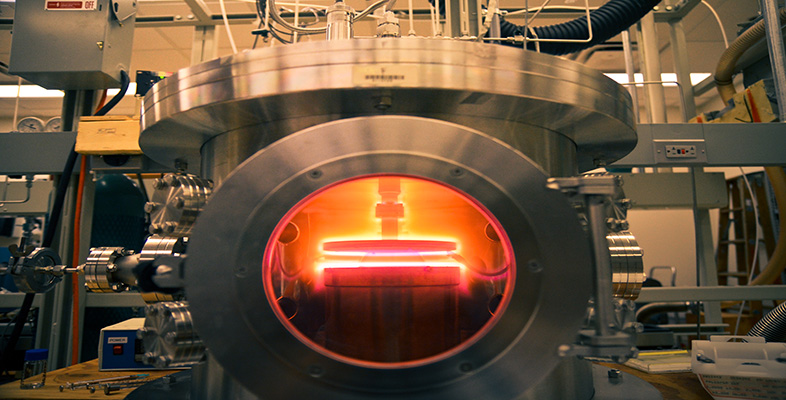2.4 Summary of Section 2
Thermometers sense temperature. They are transducers providing observable and quantifiable signals in variables other than temperature. Thermometers are calibrated to give numbers in accord with an internationally agreed scale. Various attributes influence the selection of an instrument for a task.
Temperature can determine the rate at which certain physical and chemical changes proceed, and whether some changes can occur at all.
Distinct modelling patterns characterise gradual, accelerating or sudden property variation with temperature.
Exercise 3
Here is a list of 12 items to fit into Table 3 as the opportunities or challenges labelled A to L. The list probably contains some terminology and many ideas that are unfamiliar. I don't expect that you will be able to recognise and match them all, so try to place at least one in each of the categories – gradual, accelerating and sudden.
Creep deformation (slow change in shape of a material under stress)
Homogenisation of castings (reduction of non-uniformity of composition)
Glass shattering under thermal shock
Convection in a domestic water system
Quenching (sudden cooling from high temperature) and tempering (re-heating to a moderate temperature to allow regrowth of crystals and thereby improve ductility) of steel
The temperature dependence of resistivity demands highly uniform cross-section of a lamp filament
p–n junctions (regions in a semiconductor where differently doped regions meet) are stable against homogenisation (don't intermix) at room temperature
Fuses in electrical circuits
Superconducting transitions are all at inconveniently low temperatures (so far!)
Provision of surface compressive stress enables 'safety glass' for car windows
Onset of unwanted reactions in chemical processes
Silicon melts at 1414 °C, so diffusion of dopants to control semiconducting properties cannot be done at arbitrarily high temperatures.
Answer
Creep deformation – it is thermally activated, so it's an accelerating change that is a challenge in service: E.
Homogenisation of castings – a processing opportunity that is thermally activated (accelerating): H.
Glass shattering under thermal shock – a thermal expansion challenge (gradual) during service: D.
Convection in a domestic water system – this is related to thermal expansion (gradual) in service and it represents an opportunity: A.
Quenching and tempering of steel – a sudden change that offers a processing opportunity: I.
The temperature dependence of resistivity demands highly uniform cross-section of lamp filament – a processing challenge relating to a gradually changing property: J.
p–n junctions are stable against homogenisation at room temperature – the interdiffusion of dopants is thermally activated (accelerating), so semiconductors once doped are stable in service at or near room temperature processors: B.
Fuses in electrical circuits – sudden melting of a fuse wire in service is used to advantage: C.
Superconducting transitions are all at inconveniently low temperatures – this is a service challenge for a critical phenomenon: F.
Provision of surface compressive stress enables 'safety glass' for car windows – this opportunity for processing is based on gradual thermal expansion: G.
Onset of unwanted reactions in chemical processes – here a process challenge is thermally accelerated: K.
Silicon melts at 1414 °C, so diffusion of dopants to control semiconducting properties cannot be done at arbitrarily high temperatures –this is a process challenge for semiconductor processors, this time (cf. 7) associated with a (sudden) phase change: L.
| Gradual | Accelerating | Sudden | ||
|---|---|---|---|---|
| Service | Opportunity | Electrical resistance thermometer | Heat-curable glues | Onset of ferro-electric properties |
| Bimetal switches | Enhanced performance of detergents in hotter water | Can leave cooking to simmer | ||
| A | B | C | ||
| Challenge | Crazed glaze on crockery | High-temperature limit on semiconductor performance | Some permanent magnet materials demagnetise at modest temperatures | |
| Need to compensate timer in clocks and watches | Excessive corrosion of high-temperature components | Water pipes burst through freezing | ||
| D | E | F | ||
| Process | Opportunity | Density variation provides convective mixing in castings | Temperature control of workability of glass | Chemical reaction selection by use of critical temperature |
| Metal tyres and bearing sleeves can be shrink-fitted to wheels/shafts | Sintering of powders to continuous solid (a route to near net shape forming) | Melting allows casting processes | ||
| G | H | I | ||
| Challenge | Continuous welded railway lines may buckle in extreme heat or crack in extreme cold | Over-ageing of precipitation-hardened alloys | Upset metallurgy in the heat-affected zones of welds | |
| Continued diffusion of previously implanted dopants in subsequent processing of microcircuit chips | Cracks in porcelain due to crystal transition in quartz | |||
| J | K | L |
